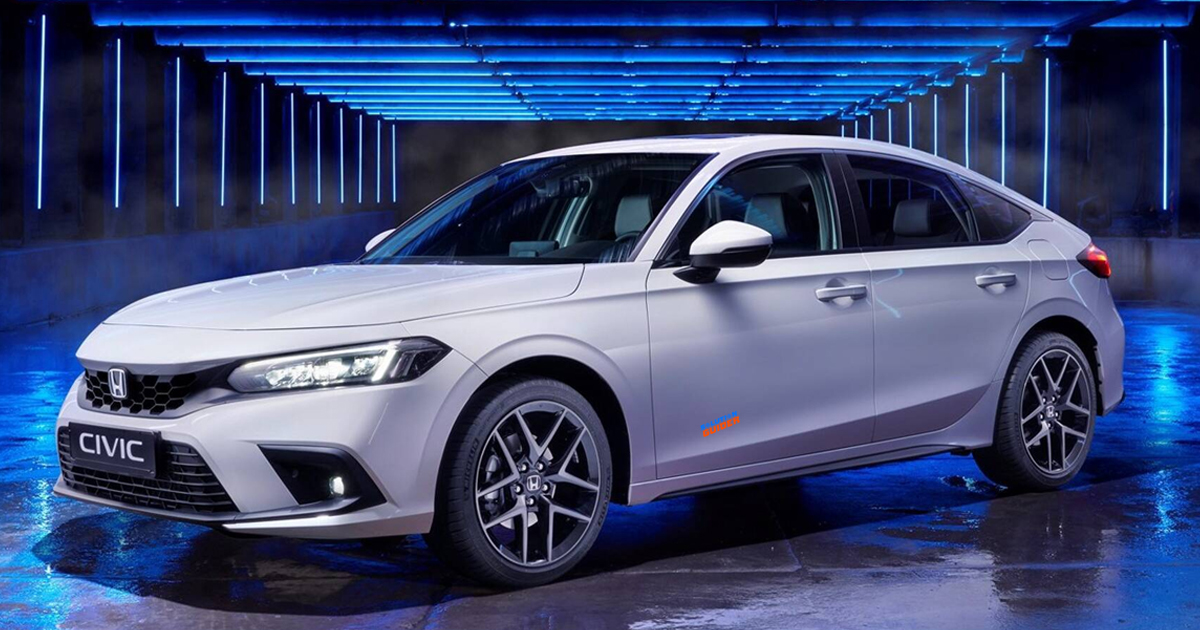The Civic Hybrid: A Glimpse into the Future of Urban Living
The Civic Hybrid: A Glimpse into the Future of Urban Living
Introduction
With great pleasure, we will explore the intriguing topic related to The Civic Hybrid: A Glimpse into the Future of Urban Living. Let’s weave interesting information and offer fresh perspectives to the readers.
Table of Content
The Civic Hybrid: A Glimpse into the Future of Urban Living

By 2025, the landscape of urban living will be significantly reshaped by a new breed of civic infrastructure: the hybrid civic space. This innovative concept transcends the traditional boundaries of public and private domains, merging the best of both worlds to create dynamic, inclusive, and adaptable environments that cater to the evolving needs of communities.
The Essence of Hybrid Civic Features:
The defining characteristic of hybrid civic spaces is their ability to seamlessly transition between different functions, accommodating a diverse range of activities and users. This adaptability is achieved through a combination of physical design elements, innovative technologies, and community-driven programming.
Key Features of Hybrid Civic Spaces:
-
Multifunctional Design: Hybrid civic spaces break free from the limitations of single-purpose structures. They can transform from bustling marketplaces to serene parks, from vibrant cultural hubs to collaborative workspaces, all within the same physical space. This flexibility is achieved through modular design elements, retractable walls, and adaptable furniture.
-
Technology Integration: These spaces seamlessly incorporate cutting-edge technologies to enhance user experience and facilitate efficient management. Smart sensors monitor environmental conditions, optimizing lighting and climate control. Digital signage provides real-time information and facilitates community engagement.
-
Community-Driven Programming: Hybrid civic spaces are not static entities but living, breathing ecosystems. They are designed to be responsive to the needs and desires of their communities. This is achieved through participatory planning processes, flexible programming, and platforms for citizen input.
Benefits of Hybrid Civic Spaces:
- Enhanced Quality of Life: By providing a diverse array of activities and amenities within walking distance, hybrid civic spaces promote social interaction, physical activity, and a sense of community.
- Economic Growth: These spaces can act as catalysts for local economic development by fostering entrepreneurship, attracting tourism, and creating opportunities for small businesses.
- Environmental Sustainability: Through their integrated technologies and focus on energy efficiency, hybrid civic spaces contribute to reducing the environmental impact of urban living.
- Social Inclusion: By offering a welcoming and accessible environment for all, hybrid civic spaces promote social inclusion and address issues of equity.
Examples of Hybrid Civic Features:
- Transformative Public Squares: Traditional public squares are being reimagined as multi-functional spaces, incorporating features like retractable canopies, outdoor projection screens, and charging stations.
- Adaptive Libraries: Libraries are evolving beyond their traditional role as repositories of books, becoming vibrant community centers that offer co-working spaces, maker labs, and interactive learning experiences.
- Smart Parks: Parks are being equipped with sensors, interactive displays, and charging stations, creating engaging spaces for recreation, education, and community events.
- Hybrid Community Centers: Community centers are integrating innovative technologies and adaptable spaces to offer a wider range of services, including childcare, healthcare, and educational programs.
FAQs on Hybrid Civic Features:
Q: How can communities ensure the success of hybrid civic spaces?
A: The success of hybrid civic spaces hinges on community engagement. This involves participatory planning processes, regular feedback mechanisms, and collaborative programming that reflects the diverse needs and interests of the community.
Q: What are the potential challenges associated with hybrid civic spaces?
A: Challenges may include the initial cost of implementation, the need for ongoing maintenance, and the potential for technology malfunctions. However, these challenges can be mitigated through careful planning, robust infrastructure, and ongoing community involvement.
Q: How can hybrid civic spaces be made accessible to all members of the community?
A: Universal design principles must be incorporated into the design and programming of hybrid civic spaces to ensure accessibility for people with disabilities, seniors, and individuals with diverse needs.
Tips for Implementing Hybrid Civic Features:
- Prioritize community engagement: Involve residents in the planning, design, and programming of hybrid civic spaces.
- Invest in sustainable technologies: Utilize energy-efficient materials and technologies to minimize environmental impact.
- Embrace flexibility: Design spaces that can easily adapt to changing needs and trends.
- Foster collaboration: Partner with local businesses, organizations, and community groups to create vibrant and inclusive spaces.
Conclusion:
Hybrid civic spaces represent a significant shift in the way we design and experience urban environments. By blending the best of public and private spaces, these innovative features offer a vision of a more vibrant, connected, and sustainable future for our cities. As we move towards 2025 and beyond, embracing the principles of hybrid civic spaces will be crucial to creating thriving and equitable communities for all.








Closure
Thus, we hope this article has provided valuable insights into The Civic Hybrid: A Glimpse into the Future of Urban Living. We hope you find this article informative and beneficial. See you in our next article!